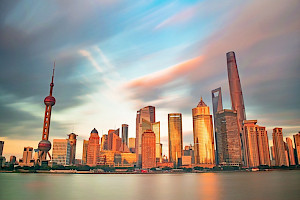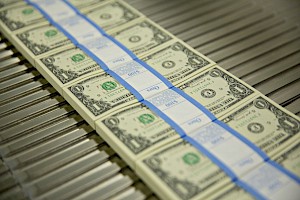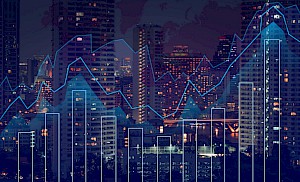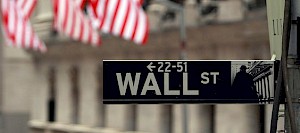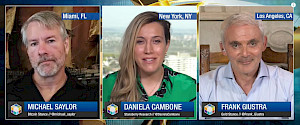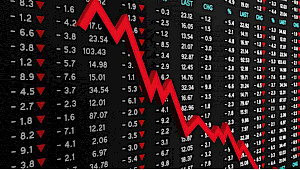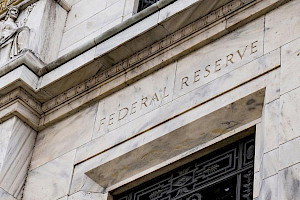Dancing on the Precipice: 'Bankruptcy Happens Gradually, then Suddenly'
January 09, 2019“Bankruptcy happens gradually, then suddenly,” Ernest Hemingway
All signs point in the same direction. We are heading toward another financial crisis and, this time, it will likely be much worse than 2008. There is a growing chorus of economists and analysts who have already sounded the alarm, but most tend to wrap their warnings in mind-numbing statistical detail. In the following article, I aim to outline where we are – and how we got here – in a simplified manner, with the hope that you can prepare yourself as best you can.
In the early 2000s, I wrote several articles warning investors about skyrocketing deficits, debt, overvalued stock markets, and dangerous policy decisions by government and the Federal Reserve. As we all know, by 2008, a lot of what I was afraid would happen, happened. When the crash came, I further predicted we would not go into a depression quite yet, for one simple reason: The Fed would print a lot of new money (quantitative easing), which would act as a floor for the entire financial system. I warned we would pay the price down the road because there is no such thing as a free lunch. Or, as The Eagles song says: “Every form of refuge has its price.”
'One should never underestimate the power of greed'
However, what I did not predict was which road would lead us to perdition – namely that the “easy” monetary policy of near-zero interest rates and quantitative easing would fuel a global debt bomb and stock market frenzy that is currently magnitudes larger than the level of debt that triggered the subprime mortgage crisis of 2008. To me, it seemed that given that near-death experience, it would be unfathomable for policy-makers to allow the financial sector to not only continue piling up debt, but to do so at a breath-taking pace. I guess one should never underestimate the power of greed.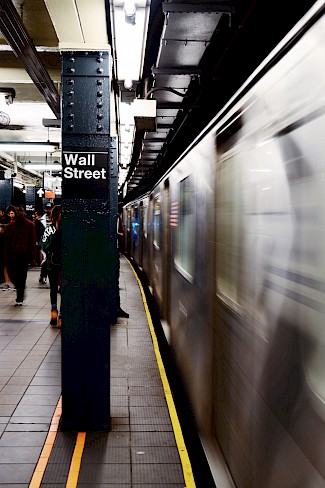
So, here is how it played out in simple terms: When the 2008 crisis unfolded, the US government and the Federal Reserve bailed out the financial sector to prevent the entire system from imploding. To achieve this, they took interest rates to zero, printed $3.5 trillion of new money and ran up the fiscal deficits with an initial $700-billion bailout. However, instead of bailing out Joe Average on Main Street, all that new and “free” money was only made available to those who already had money and coveted more: Wall Street (which caused the problem in the first place), corporate America, the One Percent, and the US government. There is nothing like the offer of “free” money to make moral hazard popular, especially on Wall Street. In economics, moral hazard occurs when someone increases their exposure to risk when that risk is insured, especially when a person takes on additional risk because someone else bears the cost of that risk. In this case, that someone was the government, and ultimately, the taxpayer.
Global debt has nearly doubled since 2008
We live in an environment where risk is not only encouraged, but where investors believe they have policy-makers as a back-stop to protect them in the event of a crash. They feel they can count on being rescued by the same failed policies that bailed them out in 2008. This blind greed is what has led us to the current insane levels of debt. All categories of debt have gone through the roof. Global debt – government, corporate, household and financial – has nearly doubled to $247 trillion since 2008. That is debt that will never be paid back. Ever. In the US alone, federal government debt now stands at $21 trillion. It was $8 trillion in 2006, which I thought was dangerous back then.
It boggles my mind that every year since 2008, policy-makers and Wall Street economists have been talking about normalizing rates – getting them to a Fed rate of five or six per cent – with a straight face. How will anyone be able to service, let alone pay back this pile of debt with “normal” interest rates? They can’t. This is the same box Japan has been in for the past 30 years, since its own financial crisis. If Japan allowed normal interest rates, the country would be bankrupt.
And it’s not only the US that’s sitting on a time bomb. China has a big problem, too. Its $34-trillion pile of public and private debt is an explosive threat to the global economy. By one estimate, China’s borrowing has quadrupled in seven years. To a lesser – but equally dangerous – extent, many other major countries face similar issues with debt, including Italy. Why should we care about China and Italy? Our global financial system is such that a financial accident in one location can easily set off a series of events that jeopardizes the entire system. Think back to the role tiny Iceland played at the beginning of the last unraveling in 2007. Contagion spreads quickly in our interconnected global financial system.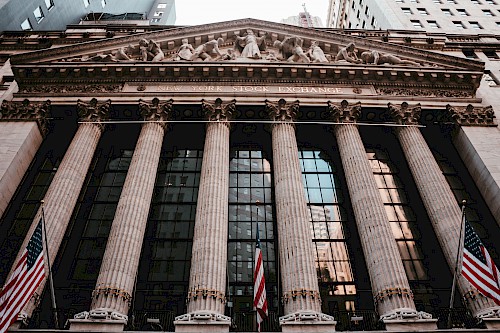
What might trigger the next crisis?
So, what might trigger the next crisis? And why won’t we have the tools we had in 2008 to prevent a total collapse?
Let’s look at where all that newly borrowed money went, and again, I am simplifying things. At the height of the financial crisis, when policy-makers were selling the public on the need to bail out financial institutions, we were told that, by doing so and by making money cheap, banks would lend to thousands of businesses that would make capital investments and create jobs. But for a number of reasons, corporate America decided instead to use all that “free” money to boost share prices via share buy-backs, dividends, and mergers and acquisitions. Wealthy individuals also used cheap money to inflate the values of high-end properties worldwide. The result was that artificially low interest rates caused the S&P to rise by 300 percent from its post-crash lows and an additional 80 percent from its pre-crash peak. Both corporate and stock markets are now in bubble territory due to artificial, central-bank-driven low interest rates that have everyone chasing ever riskier investments to achieve higher returns.
Why is this happening? Consider that $17 trillion of new wealth was created by the S&P in the last 10 years. Those who benefit are those who can access that easy money, but are also encouraged to be profligate – namely the banks, hedge funds, and corporate directors and officers. In other words, the One Percent. As for the folks on Main Street – who never had an opportunity to tap into that open spigot – they saw their income barely budge. Income inequality in the US is among the worst in the developed world. One would think the One Percent would be content after this much pillaging. Not quite. As a final cash grab reminiscent of the Roman general Scipio – who not only destroyed and plundered Carthage, but as a final insult also plowed over and sowed the city with salt after defeating it in the Third Punic War – Congress passed a multi-trillion-dollar tax cut that benefited mostly the very rich and left the bill to future taxpayers. This was a last attempt to goose an already overvalued stock market. It worked well … for about a year.
Loose threads will unravel
The next crisis can start out of nowhere. It can be triggered by the failure of a financial institution, a made-at-home political crisis, or a serious geopolitical event. Anything that removes the cloak of confidence that the entire financial system is based on. All it will take is something to tug on that loose thread hard enough to unravel that confidence and expose how naked the system truly is.  And that’s when the panic sets in – when everyone starts to rush for the exits, asset values (stocks, bonds, real estate) crash. My guess is that as markets continue to weaken, we will expose an over-leveraged institution that will intensify a panic in the markets, which in turn will expose the problems in other institutions, and so on and so forth until policy-makers are compelled to act.
And that’s when the panic sets in – when everyone starts to rush for the exits, asset values (stocks, bonds, real estate) crash. My guess is that as markets continue to weaken, we will expose an over-leveraged institution that will intensify a panic in the markets, which in turn will expose the problems in other institutions, and so on and so forth until policy-makers are compelled to act.
This is exactly what happened in 2008. But this time, we don’t have the same tools to prevent a collapse. Lowering interest rates isn’t really an option. Printing more money would have serious repercussions for the value of the US dollar. And other forms of fiscal stimulus for the economy will only add to the country’s debt load, which could spark panic among foreign lenders.
The tool box is empty
Simply put, we squandered our chances over the past 10 years. The tool box is empty. The impending unravelling will be ugly. If you thought the rise of populism that took place as a result of the inequality that deepened in the aftermath of the last crisis was bad, read a few history books and brace yourself for what happens when populism really takes hold.
The reader may ask, what can I do to prepare? Unfortunately, the answer is: Not much. No one will remain unscathed. I believe that, in this scenario, all asset prices will fall. This time, even cash – which was king during the last crisis – might have risk, given an inflationary depression scenario. Gold might fall in the initial stages of a panic, as it did in 2008, but recover strongly once the markets see the endless money printing on the horizon. Recent market activity suggests a major correction has already begun. Be prepared for a drawn-out roller coaster ride with intermittent moments of reprieve provided by comforting words from the Fed, talk of trade war resolutions, sporadic upbeat economic data, etc.
How to manage your risk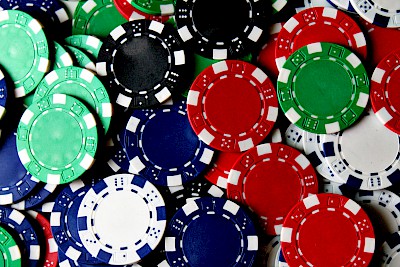
However, you can manage your risk by being cautious. I suggest some cash, a lot of gold … and a lot of praying.
No one likes a party spoiler, especially a Chicken Little. There were plenty of people besides me warning investors in the years preceding the 2008 crisis – a lot of them far smarter than I am. But when panic sets in, it moves at breakneck speed and most people freeze, hoping it’s just a bad dream that will go away. By the time they decide to act, asset prices are at rock bottom. I am often asked advice (which I am loath to give) when markets initially start to correct. Many people’s first reaction is to hold on until a bounce brings them back to the value before the correction. This is how greed works. I always ask the question: How important is that marginal upside to you in a market that is already overvalued. And, are you willing to risk the value of your portfolio if things really fell apart just to get that extra little upside?
So, you have a couple of choices. Take some chips off the table or party like it’s 1929.


